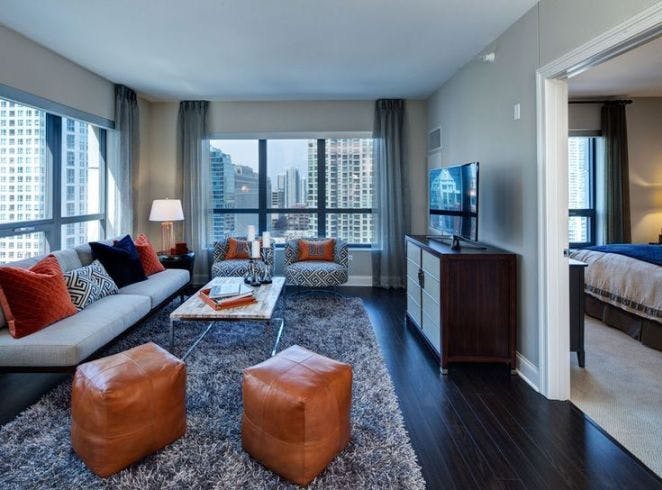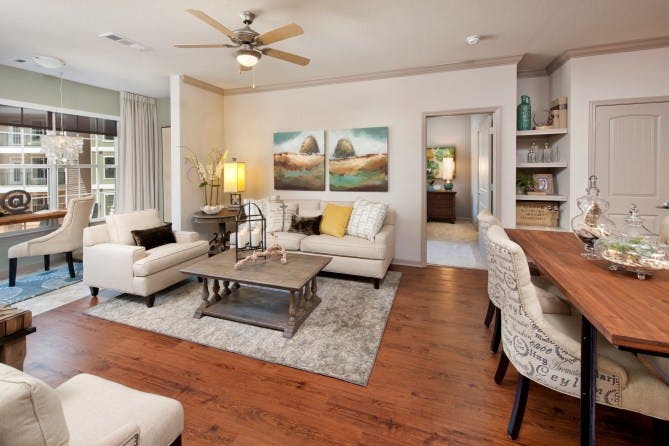While archival evidence suggests that so-called “living rooms” have been a part of some homes for nearly two centuries, it wasn’t until the tail-end of the 19th century that the living room become a mainstay in the American home. To better understand why this is and how the living room has evolved into a center for entertainment, socializing, and storing a typical household’s many electronic gadgets, take a brief journey through the past dozen or so decades.
The Living Room: A Modern Luxury
If family has been so important to humanity for so many centuries, with family-oriented (single or multi-family) households being the norm, why did it take so long for the living room to come about? The widely accepted answer to this question is that it was only fairly recently that families started to experience the advantages associated with having free time and a disposable income. Once back-breaking work started to be rewarded accordingly and humans started to tune into the needs and desires they have beyond the most basic needs of food and shelter, the living room evolved accordingly.

From Parlor to Living Room
The first room without an apparent, vital function to appear frequently in a home was the parlor room, which many consider the antecedent to the modern living room. Parlor rooms were used for the display of a homeowner’s finest artworks, decor, and trinkets. They were also used to entertain guests before or after dinner or on other occasions. A subtle, yet notable difference between the original parlor room and the modern living room is that the parlor was designed to impress guests, whereas the modern-day living room is more representative of a homeowner’s style and interests and is designed for the day-to-day entertainment of a household’s members.
RCAs Living Room of Tomorrow
Defunct since 1986, the Radio Corporation of America (RCA) was an entertainment powerhouse throughout much of the 20th century. In 1939, the company showcased a “living room of tomorrow” at the World’s Fair held in New York. At the center of this living room was a radio, a small television screen, a movie projector, and a fax machine that could deliver a homeowner’s daily newspaper via radio waves. While some elements of RCA’s living room of tomorrow would not come to fruition, the display was accurate in many ways.
The TV Takes Center Stage
By the time 1960 rolled around, there was at least one television set in 90% of American households. In most homes, a television set served as the focal point of the living room. Flat screens and DVRs were still decades from their inception, but the basic framework for the modern home or apartment living room had been established.
2001: Come and Gone
In 1967, beloved broadcast journalist Walter Cronkite gave American families all across the country a preview of what living rooms of the future may look like in an episode of “The 21st Century.” From the comfort of their 1960s living rooms, viewers marveled at the giant control panel through which all of the electronics in a home could be automated and the glowing walls that were changing colors before their eyes.
To those of us who lived through it, 2001 didn’t feel like quite the space odyssey that Arthur C. Clarke promised it would be. Nevertheless, we were enjoying a crystal clear picture and extraordinary sound on flat-as-a-pancake televisions that would have been thought unimaginable just a few decades before.

So what does the living room of tomorrow look like? While no one can say for sure, it is likely to be fairly similar to the living room of today. The trend toward home automation is likely to continue, and more advanced and high-tech gadgets are sure to replace their has-been predecessors. Still, one can expect to see some kind of screen or projector on which television shows, movies, and sporting events can be watched to be at the center of the room. Leather or polyester sofas and reclining chairs will be positioned to give occupants a good view of the screen. The living room will be designed more to help residents Live Life + Love Life than to impress others. The living room will, in a sense, define the home.

 View All Posts by Jason Ernst
View All Posts by Jason Ernst